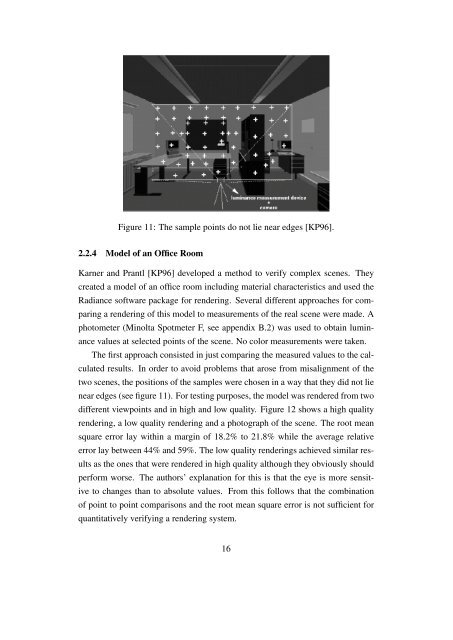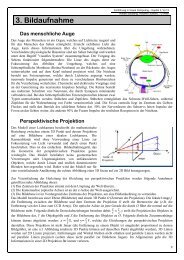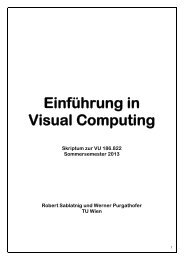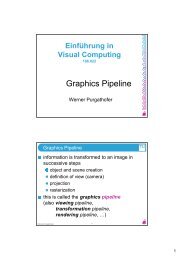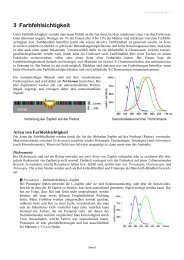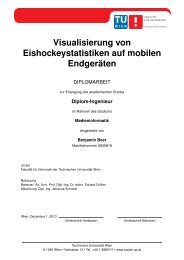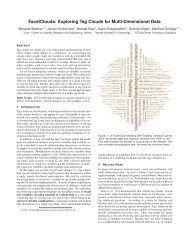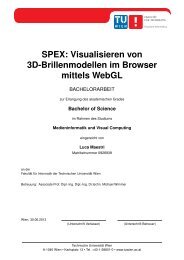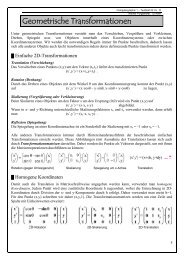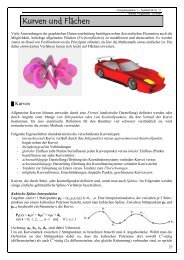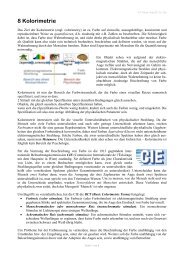Usability of Digital Cameras for Verifying Physically Based ...
Usability of Digital Cameras for Verifying Physically Based ...
Usability of Digital Cameras for Verifying Physically Based ...
Create successful ePaper yourself
Turn your PDF publications into a flip-book with our unique Google optimized e-Paper software.
Figure 11: The sample points do not lie near edges [KP96].<br />
2.2.4 Model <strong>of</strong> an Office Room<br />
Karner and Prantl [KP96] developed a method to verify complex scenes. They<br />
created a model <strong>of</strong> an <strong>of</strong>fice room including material characteristics and used the<br />
Radiance s<strong>of</strong>tware package <strong>for</strong> rendering. Several different approaches <strong>for</strong> com-<br />
paring a rendering <strong>of</strong> this model to measurements <strong>of</strong> the real scene were made. A<br />
photometer (Minolta Spotmeter F, see appendix B.2) was used to obtain lumin-<br />
ance values at selected points <strong>of</strong> the scene. No color measurements were taken.<br />
The first approach consisted in just comparing the measured values to the cal-<br />
culated results. In order to avoid problems that arose from misalignment <strong>of</strong> the<br />
two scenes, the positions <strong>of</strong> the samples were chosen in a way that they did not lie<br />
near edges (see figure 11). For testing purposes, the model was rendered from two<br />
different viewpoints and in high and low quality. Figure 12 shows a high quality<br />
rendering, a low quality rendering and a photograph <strong>of</strong> the scene. The root mean<br />
square error lay within a margin <strong>of</strong> 18.2% to 21.8% while the average relative<br />
error lay between 44% and 59%. The low quality renderings achieved similar res-<br />
ults as the ones that were rendered in high quality although they obviously should<br />
per<strong>for</strong>m worse. The authors’ explanation <strong>for</strong> this is that the eye is more sensit-<br />
ive to changes than to absolute values. From this follows that the combination<br />
<strong>of</strong> point to point comparisons and the root mean square error is not sufficient <strong>for</strong><br />
quantitatively verifying a rendering system.<br />
16


